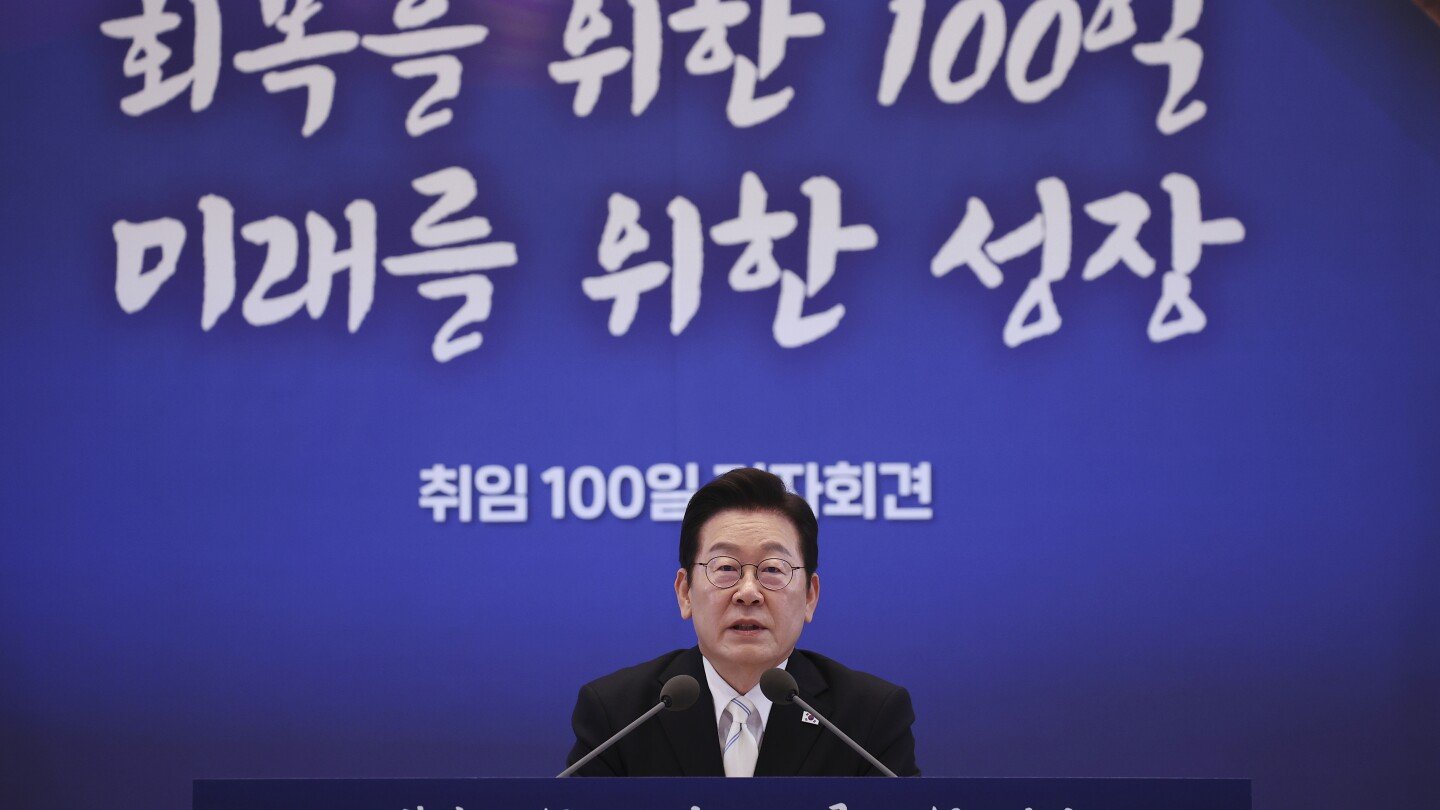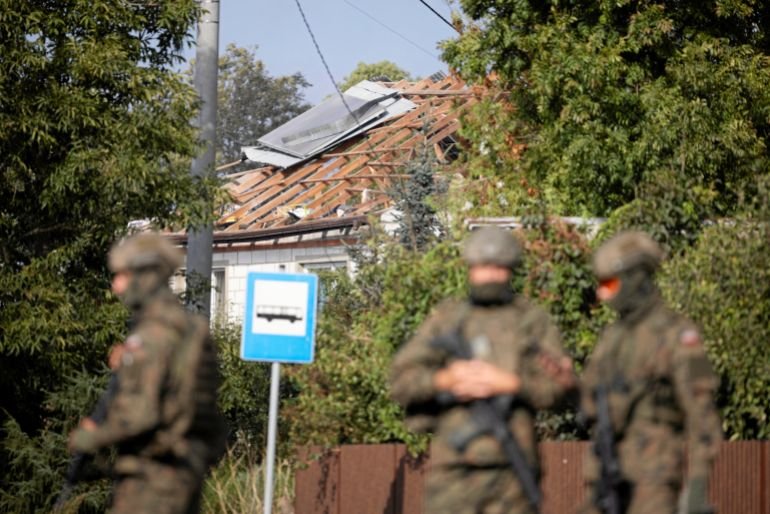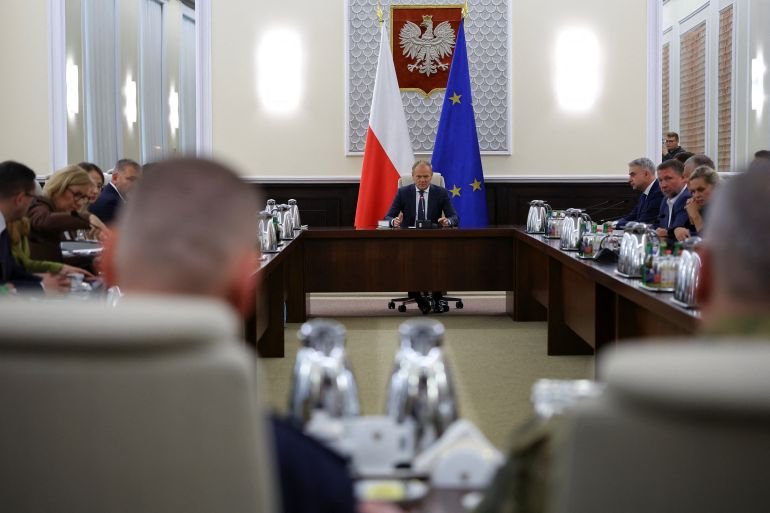Top Stories
Katie Ledecky tops Pallister, McIntosh in swim worlds epic; Gretchen Walsh adds gold

In what may have been the best championship race of her career, Katie Ledecky won an 800m freestyle that lived up to the hype, becoming the first swimmer to capture a seventh world title in one event.
Ledecky swam 8:05.62 to beat Australian Lani Pallister (8:05.98) and Canadian Summer McIntosh (8:07.29) in a showdown among the three fastest women in history in the event.
“This is my favorite event. It was my first gold (at the 2012 Olympics),” Ledecky said, according to World Aquatics. “Even in practice, if I’m doing 800s, I kind of tell myself that. I kind of have this fake rule that I don’t lose 800s. So whenever we’re doing 800s in practice, that’s when I really try to get up there with (Olympic men’s 800m champion) Bobby (Finke), and I tell myself that.”
It’s her 23rd world title (second to Michael Phelps’ 26) and 30th world medal (second to Phelps’ 33). The U.S. added golds Saturday from Gretchen Walsh (50m butterfly) and the mixed-gender 4x100m freestyle relay (world record).
SWIMMING WORLDS: Results | Broadcast Schedule
Since Ledecky’s 2012 Olympic breakout at age 15, no challenger previously finished within one second of her in a championship distance final (a combined 18 Olympic and world championships 800m and 1500m races).
But McIntosh, an 18-year-old who won three 2024 Olympic golds, planted doubt by swimming the third-fastest time in history at the Canadian trials in June. It was 95 hundredths off Ledecky’s latest world record of 8:04.12 that she set in May.
Ledecky then trailed Saturday’s final at 700 meters — a tiny 14 hundredths behind McIntosh, who faded in the last 100.
Pallister was the surprise of the race, sticking near Ledecky and McIntosh. She then charged home with the fastest last 50 — taking 4.86 seconds off her Australian record time to become the closest runner-up in Ledecky’s 19 career global distance titles.
In a later press conference with Ledecky, Pallister said she attended the 2014 U.S. Championships at age 12, a meet where Ledecky broke the the 400m freestyle world record for the first time.
“Getting the silver behind the greatest distance (swimmer) is wicked,” she said, according to World Aquatics.
Ledecky celebrated with a fist splash into the water, as she has been known to do after significant victories. After getting out of the pool, she embraced her coach, Anthony Nesty.
“I’ve probably slept a little better at this level of a meet than I have in a long time,” Ledecky said, according to World Aquatics. “And I think part of that is just I’m I don’t feel like there’s too much pressure at this point in my career. I don’t feel like I have too much to lose. And again, just knowing what a fast field this was, I knew that if I put my best foot forward, I could be proud of the swim. I could be proud of the season that I’ve had. I said this back in May when I broke the world record, that if my season was over, then I would I would be happy. And I just kept reminding myself of that this week, and I think that kind of relieved any nerves.”
McIntosh, who grew up with a Ledecky quote on her wall, added the 800m free to her global championship program for the first time since placing 11th at the Tokyo Olympics at age 14.
She wanted to challenge Ledecky, and she wanted to become the second swimmer after Phelps to win five individual titles at a single worlds.
In the end, she said she was thinking too much about Ledecky beside her during the final rather than swim her own race.
“Obviously that’s not even close to what I wanted time-wise, place-wise, how I executed the race,” McIntosh said of her bronze, according to World Aquatics. “I just want to say congratulations to Katie and Lani of course, they had amazing swims.
“Lots to learn, and this is my favorite race so that definitely will fuel me to continue to do it until I master it and execute it the way I want it and stand on top of the podium at the international level.”
McIntosh will bid Sunday, on the last day of the meet, to finish with four golds in the 400m individual medley, where she is an overwhelming favorite (7 a.m. ET, Peacock).
For at least one more year, though, Ledecky is still the distance freestyle queen.
Gretchen Walsh fills U.S. women’s swim worlds gold set
Walsh adds 50m fly world title to 100m crown
Having already won gold in the women’s 100m butterfly earlier in the competition, Gretchen Walsh swam a time of 24.83 seconds to add the 50m world title as well at the 2025 World Aquatics Championships in Singapore.
Earlier Saturday, Walsh added the 50m fly title to her 100m fly victory from last Monday.
She swam 24.83 seconds, distancing silver medalist Alexandria Perkins by 48 hundredths — greater than the margin separating Perkins from last place in the race.
Of the 42 women’s and men’s events on the world championships program, the women’s 50m fly was the only one the U.S. had never won.
The U.S. has won at least one medal in all 16 women’s events held so far at these worlds. There are four women’s finals left on Sunday. The U.S. has never won a medal in every women’s event at worlds and has done so on the men’s side once — at the first edition in 1973.
Walsh was one of the majority of U.S. swim team members affected to varying degrees by acute gastroenteritis, or a stomach bug, leading into worlds.
“It felt like myself again in the water,” she said Saturday. She said Monday that her body had felt “fragile.”
She has one individual event left at these worlds: the 50m free. She owns the world’s top time this year.
In the mixed 4x100m free, Jack Alexy, Patrick Sammon, Kate Douglass and Torri Huske combined to swim the world record of 3:18.48. The event is not on the Olympic program.
Australian Kaylee McKeown and American Regan Smith went one-two in the 200m backstroke, just as they did in all three backstrokes at the 2023 Worlds, both backstrokes at the 2024 Olympics and in the 100m back earlier at these worlds.
American Claire Curzan, who swept the backstrokes at the 2024 Worlds in the absence of McKeown and Smith, took bronze Saturday. Both U.S. entries won a medal in all three women’s backstroke events.
McKeown clocked 2:03.33, the third-fastest time in history. McKeown and Smith combine to own 22 of the top 23 times in history.
Frenchman Maxime Grousset took the men’s 100m fly in 49.62, the third-fastest time in history behind Caeleb Dressel’s top two.
Australian Cameron McEvoy and Brit Ben Proud went one-two in the men’s 50m free, repeating their finishes from the Olympics. Alexy added bronze to his 100m free silver.
Top Stories
South Korea says detained Korean workers released from Georgia facility before flight home

SEOUL, South Korea (AP) — South Korea’s president said Thursday that Korean companies will likely hesitate to make further investments in the United States unless Washington improves its visa system for their employees, as U.S. authorities released hundreds of workers who were detained from a Georgia factory site last week.
In a news conference marking 100 days in office, Lee Jae Myung called for improvements in the U.S. visa system as he spoke about the Sept. 4 immigration raid that resulted in the arrest of more than 300 South Korean workers at a battery factory under construction at Hyundai’s sprawling auto plant west of Savannah.
South Korea’s Foreign Ministry later confirmed that U.S. authorities have released the 330 detainees – 316 of them Koreans – and that they were being transported by buses to Atlanta’s Hartsfield-Jackson airport where they will board a charter flight scheduled to arrive in South Korea on Friday afternoon. The group also includes 10 Chinese nationals, three Japanese nationals and one Indonesian.
The massive roundup and U.S. authorities’ release of video showing some workers being chained and taken away, sparked widespread anger and a sense of betrayal in South Korea. The raid came less than two weeks after a summit between U.S. President Donald Trump and Lee, and just weeks after the countries reached a July agreement that spared South Korea from the Trump administration’s highest tariffs — but only after Seoul pledged $350 billion in new U.S. investments, against the backdrop of a decaying job market at home.
Lawmakers from both Lee’s liberal Democratic Party and the conservative opposition decried the detentions as outrageous and heavy-handed, while South Korea’s biggest newspaper compared the raid to a “rabbit hunt” executed by U.S. immigration authorities in a zeal to meet an alleged White House goal of 3,000 arrests a day.
During the news conference, Lee said South Korean and U.S. officials are discussing a possible improvement to the U.S. visa system, adding that under the current system South Korean companies “can’t help hesitating a lot” about making direct investments in the U.S.
Lee: ‘It’s not like these are long-term workers’
U.S. authorities said some of the detained workers had illegally crossed the U.S. border, while others entered legally but had expired visas or entered on visa waivers that prohibited them from working.
But South Korean officials expressed frustration that Washington has yet to act on Seoul’s yearslong demand to ensure a visa system to accommodate skilled Korean workers, though it has been pressing South Korea to expand U.S. industrial investments.
South Korean companies have been mostly relying on short-term visitor visas or Electronic System for Travel Authorization to send workers who are needed to launch manufacturing sites and handle other setup tasks, a practice that had been largely tolerated for years.
Lee said that whether Washington establishes a visa system allowing South Korean companies to send skilled workers to industrial sites will have a “major impact” on future South Korean investments in America.
“It’s not like these are long-term workers. When you build a factory or install equipment at a factory, you need technicians, but the United States doesn’t have that workforce and yet they won’t issue visas to let our people stay and do the work,” he said.
“If that’s not possible, then establishing a local factory in the United States will either come with severe disadvantages or become very difficult for our companies. They will wonder whether they should even do it,” Lee added.
Lee said the raid showed a “cultural difference” between the two countries in how they handle immigration issues.
“In South Korea, we see Americans coming on tourist visas to teach English at private cram schools — they do it all the time, and we don’t think much of it, it’s just something you accept,” Lee said.
“But the United States clearly doesn’t see things that way. On top of that, U.S. immigration authorities pledge to strictly forbid illegal immigration and employment and carry out deportations in various aggressive ways, and our people happened to be caught in one of those cases,” he added.
South Korea, US agree on working group to settle visa issues
Following a meeting with U.S. Secretary of State Marco Rubio in Washington, South Korean Foreign Minister Cho Hyun said Wednesday that U.S. officials have agreed to allow the workers detained in Georgia to later return to finish their work at the site. He added that the countries agreed to set up a joint working group for discussions on creating a new visa category to make it easier for South Korean companies to send their staff to work in the United States.
Before leaving for the U.S. on Monday, Cho said more South Korean workers in the U.S. could be vulnerable to future crackdowns if the visa issue isn’t resolved, but said Seoul does not yet have an estimate of how many might be at risk.
The Georgia battery plant is one of more than 20 major industrial sites that South Korean companies are currently building in the United States. They include other battery factories in Georgia and several other states, a semiconductor plant in Texas, and a shipbuilding project in Philadelphia, a sector Trump has frequently highlighted in relation to South Korea.
Min Jeonghun, a professor at South Korea’s National Diplomatic Academy, said it’s chiefly up to the United States to resolve the issue, either through legislation or by taking administrative steps to expand short-term work visas for training purposes.
Without an update in U.S. visa policies, Min said, “Korean companies will no longer be able to send their workers to the United States, causing inevitable delays in the expansion of facilities and other production activities, and the harm will boomerang back to the U.S. economy.”
Top Stories
Poland shoots down Russian drones: Will NATO enter war in Ukraine? | Russia-Ukraine war News

Polish and NATO forces scrambled to intercept Russian drones which entered Poland’s airspace early on Tuesday night and early on Wednesday, marking their first direct military engagement with Moscow since the Kremlin’s full-scale invasion of Ukraine began in 2022.
Both Polish and NATO jets responded to the violation of Polish airspace, which occurred during a Russian aerial attack on Ukraine. “There was an unprecedented violation of Polish airspace by drone-type objects,” the Polish military operational command said in a statement. “This is an act of aggression that posed a real threat to the safety of our citizens.”
Poland temporarily shut down at least three of its airports, including Warsaw’s Chopin Airport, the country’s largest, and advised people to stay at home while the operation continues. People in risk-prone areas in eastern regions of Poland bordering Ukraine, including the capital of Warsaw, have been told to take shelter.
“There is no reason to claim that we are in a state of war… but the situation is significantly more dangerous than all previous ones,” said Polish Prime Minister Donald Tusk. He added that the prospect of a large military conflict is “closer than at any time since the Second World War”.
The Russian drone incursion comes just three days after Moscow hit the main government building in Ukraine’s Kyiv. That attack also damaged the European Union and British Council buildings in the Ukrainian capital.
So, is NATO now inching towards a war with Russia?
What has happened in Poland?
On Wednesday morning, the Polish military said it had shot down “drone-like objects” which entered its airspace during a Russian aerial attack on neighbouring Ukraine.
According to Polish officials, the drones crossed the border amid a wave of Russian aerial strikes targeting western Ukraine, triggering an immediate military response, which was joined by Polish F-16 fighter jets, Dutch F-35, and Italian AWACS surveillance planes.
One of the drones struck a residential building in Wyryki, eastern Poland. Nobody was injured, according to the Reuters news agency.
This is the first time that NATO-allied forces have engaged Russian military assets since Moscow invaded Ukraine in February 2022.
Tusk called Russia’s violation of Polish airspace by a “huge” number of Russian drones a “large-scale provocation”. He added that the NATO forces had shot down the ones that posed any threat.
Later in the day, Tusk informed Poland’s parliament that the first violation of Polish airspace occurred at about 11:30pm (21:30 GMT) on Tuesday, and the last was reported at 6:30am (04:30 GMT) on Wednesday.
He added that preliminary reports suggest there were 19 airspace violations in total, with a “significant number” of drones crossing into Poland.
“We are ready to repel such provocations. The situation is serious, and no one doubts that we must prepare for various scenarios,” Tusk said in his statement. “All our allies are taking the situation very seriously. We have not recorded any casualties.”
Tusk also convened an emergency meeting with his top cabinet ministers and stated that his office was in contact with NATO officials.

Could this drag NATO into Russia’s war in Ukraine?
The incident has thrust NATO’s collective defence principles into the spotlight. Being a NATO member, a drone attack on Poland could trigger Article 5 of the NATO treaty.
That article forms the cornerstone of the alliance’s collective defence strategy. It states that an “armed attack” against one or more members in Europe or North America shall be considered an attack against all, obligating allies to take action, including the use of armed force, to restore security.
Article 5 is not triggered automatically by such an attack, but can be initiated by an affected nation. It requires a consensus among NATO’s 30 member states that the incident meets the threshold of an attack warranting collective action.
Since the treaty was first signed in 1949, Article 5 has been invoked only once, following the September 11, 2001, attacks on the US.
Will Poland initiate Article 5?
Not quite yet. Tusk said Poland will invoke Article 4 of the treaty, under which a nation can request a formal consultation within the alliance if it believes its security has been threatened. This would serve as a political precursor to Article 5 deliberations.
Historically, Article 4 has been invoked only seven times since NATO’s creation; the last time was by Bulgaria, the Czech Republic, Estonia, Latvia, Lithuania, Poland, Romania and Slovakia in 2022 immediately after the Russian invasion of Ukraine.
While Tusk said he appreciates expressions of solidarity, “the words are not enough” and Poland will request “much greater” support from its allies.

How has the EU responded to this incident?
The EU’s top diplomat, Kaja Kallas, vice president of the European Commission, said the incident marked an escalation of Russia’s war in Ukraine.
“We must raise the cost on Moscow, strengthen support for Ukraine, and invest in Europe’s defence,” she said in a statement posted on X. “The EU plays a major role and we will support initiatives like the eastern border shield defence line.”
Kallas said the EU stood in “full solidarity with Poland” and called the Russian drone intrusion “the most serious European airspace violation by Russia since the war began, and indications suggest it was intentional, not accidental”.
EU’s defence commissioner, Andrius Kubilius, also emphasised the need for a “drone wall” along its shared borders. “Once again Russia tests frontier states, EU & NATO,” Kubilius wrote in a post on X. “We shall work together with member states, frontier countries and Ukraine. Russia will be stopped.”
How has Ukraine responded?
Ukraine’s president, Volodymyr Zelenskyy, warned that Moscow was continuing to “push the boundaries of what is possible” by aiming drones at Poland.
“If [Russia] does not encounter a strong reaction, it remains at the new level of escalation,” Zelenskyy said, adding that 15 regions of Ukraine had been targeted overnight in a “massive” attack by 415 drones of various types and more than 40 cruise and ballistic missiles.
“The Russians must feel the consequences. Russia must feel that the war cannot be expanded and will have to be ended,” said the Ukrainian president.
What else is Russia doing right now?
The violation of Polish airspace by the Russian drones comes as Moscow ramps up its attacks on Kyiv, stalls ceasefire talks and plans military exercises in neighbouring Belarus.
Poland said it would close its border with Belarus on Thursday, at midnight (22:00 GMT), in advance of an upcoming military drill.
Russia and Belarus’s large-scale military exercises, called the “Zapad” drills – meaning “west” in Russian – typically involve thousands of troops, tanks, aircraft and live-fire operations across western regions. The drill is a particular security concern for neighbouring NATO member states Poland, Lithuania and Latvia.
“On Friday, Russian-Belarusian manoeuvres, very aggressive from a military doctrine perspective, begin in Belarus, very close to the Polish border,” Tusk told a government meeting in Poland.
Belarus’s defence minister said this year’s Zapad would include drills for the possible use of nuclear weapons and the Russian-made, intermediate-range hypersonic Oreshnik missile.
Past Zapad drills have prompted concerns in the West, most notably in 2021, when Russian troops deployed in Belarus for exercises stayed for longer than expected and then spearheaded one part of the 2022 invasion of Ukraine.
India, which has been hit by United States President Donald Trump with additional trade tariffs for buying Russian oil, is also expected to join the seven-day military drill. Trump is now also pushing the EU to levy a 100 percent trade tariff on India – and has reportedly offered to match this if it agrees.
Despite sustained diplomatic engagement for months as well as pressure from the US, the gap between Moscow and Kyiv shows little sign of narrowing, particularly on issues such as territorial concessions and post-war security arrangements.
Top Stories
Horoscope for Thursday, September 11, 2025 – Chicago Sun-Times

- Horoscope for Thursday, September 11, 2025 Chicago Sun-Times
- Horoscopes Today, September 11, 2025 USA Today
- Your Daily Horoscope by Madame Clairevoyant: September 11, 2025 The Cut
- Your Daily Couples Horoscope for September 11, 2025 yahoo.com
- Horoscope for Wednesday, 9/10/25 by Christopher Renstrom SFGATE
-

 Business2 weeks ago
Business2 weeks agoThe Guardian view on Trump and the Fed: independence is no substitute for accountability | Editorial
-
Tools & Platforms1 month ago
Building Trust in Military AI Starts with Opening the Black Box – War on the Rocks
-

 Ethics & Policy2 months ago
Ethics & Policy2 months agoSDAIA Supports Saudi Arabia’s Leadership in Shaping Global AI Ethics, Policy, and Research – وكالة الأنباء السعودية
-

 Events & Conferences4 months ago
Events & Conferences4 months agoJourney to 1000 models: Scaling Instagram’s recommendation system
-

 Jobs & Careers2 months ago
Jobs & Careers2 months agoMumbai-based Perplexity Alternative Has 60k+ Users Without Funding
-

 Podcasts & Talks2 months ago
Podcasts & Talks2 months agoHappy 4th of July! 🎆 Made with Veo 3 in Gemini
-

 Education2 months ago
Education2 months agoVEX Robotics launches AI-powered classroom robotics system
-

 Education2 months ago
Education2 months agoMacron says UK and France have duty to tackle illegal migration ‘with humanity, solidarity and firmness’ – UK politics live | Politics
-

 Funding & Business2 months ago
Funding & Business2 months agoKayak and Expedia race to build AI travel agents that turn social posts into itineraries
-

 Podcasts & Talks2 months ago
Podcasts & Talks2 months agoOpenAI 🤝 @teamganassi

